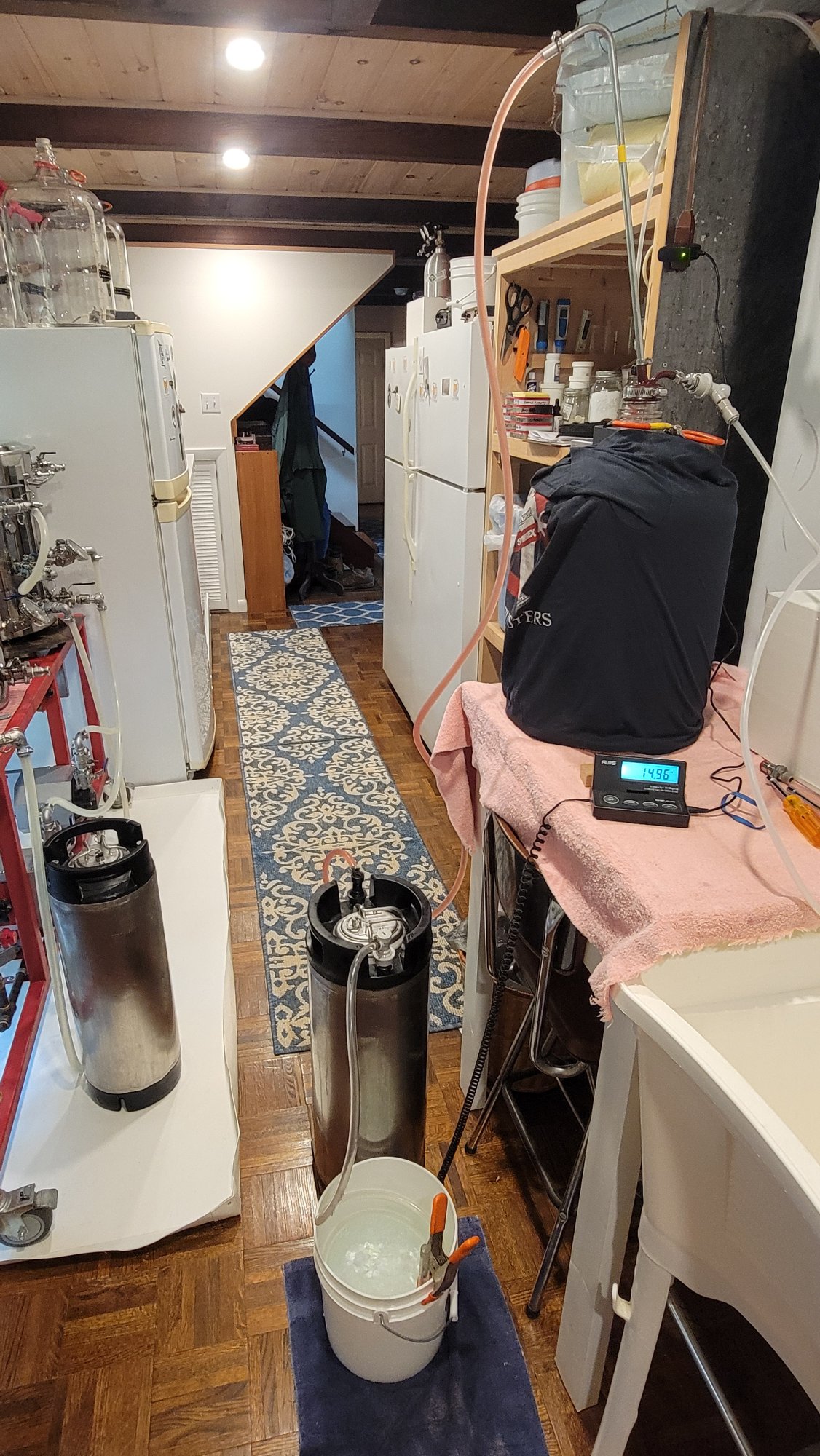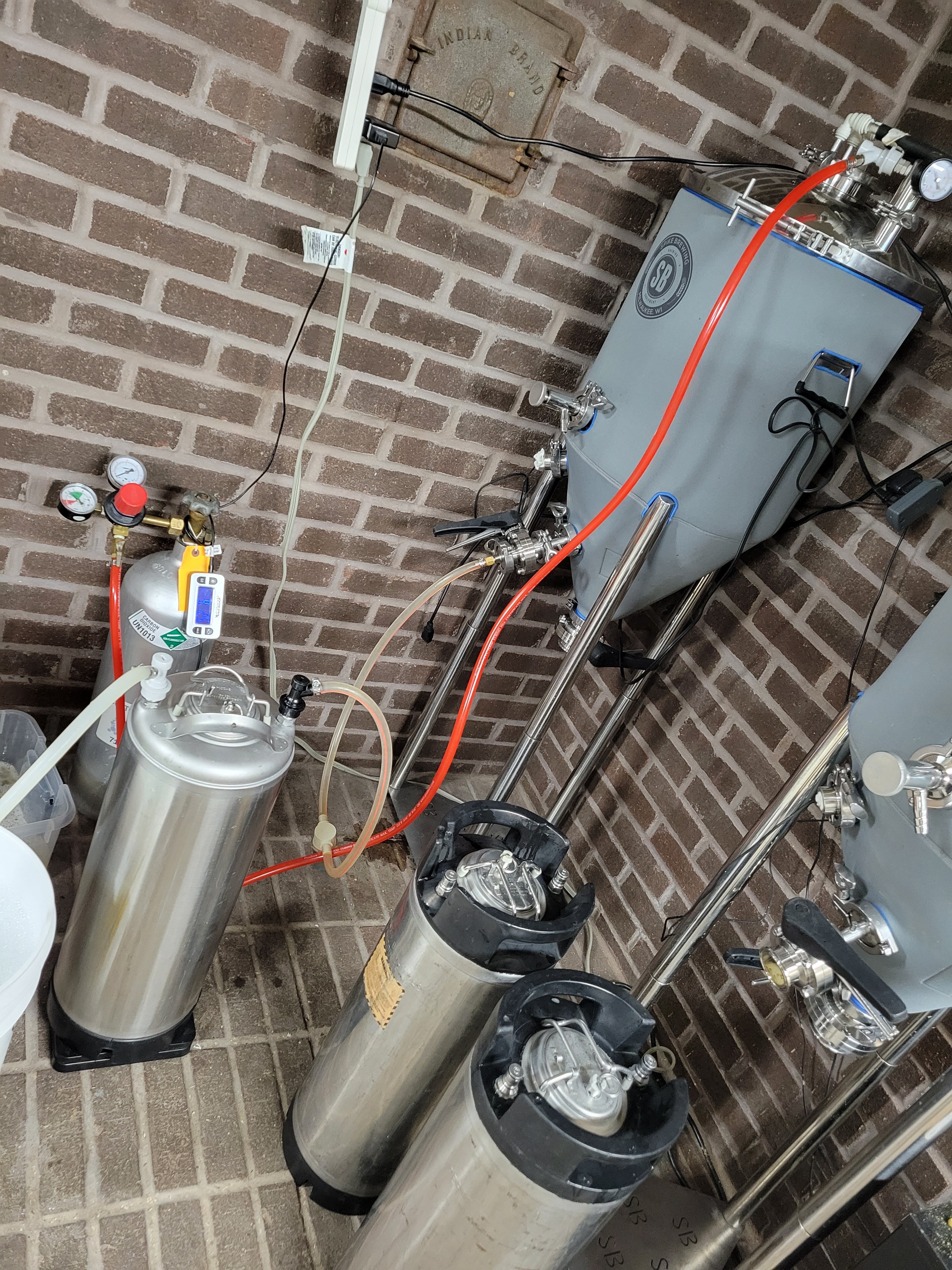terrypratt1
Well-Known Member
Looking for input from others. At first I tried the "frost line" method but finally purchased a scale off of market place. Still looking to dial in how much is too much. If I assume:
* 5 Gallons of water weigh ~ 41.7 pounds.
* Beer at 1.010 gravity is ~ 5% heavier than water.
* So - 5 gallons of typical beer would be 43.8 pounds.
Would you all aim for this is a 5 gallon Corny Keg - or is that pushing things too much? My Corny kegs empty weigh in at 12 pounds (so 55.8 pounds with 5 gallons of beer). I have not gone past 52 pounds - when filling - am I leaving too much "in the tank" so to speak?
Terry
* 5 Gallons of water weigh ~ 41.7 pounds.
* Beer at 1.010 gravity is ~ 5% heavier than water.
* So - 5 gallons of typical beer would be 43.8 pounds.
Would you all aim for this is a 5 gallon Corny Keg - or is that pushing things too much? My Corny kegs empty weigh in at 12 pounds (so 55.8 pounds with 5 gallons of beer). I have not gone past 52 pounds - when filling - am I leaving too much "in the tank" so to speak?
Terry































![Craft A Brew - Safale BE-256 Yeast - Fermentis - Belgian Ale Dry Yeast - For Belgian & Strong Ales - Ingredients for Home Brewing - Beer Making Supplies - [3 Pack]](https://m.media-amazon.com/images/I/51bcKEwQmWL._SL500_.jpg)




























